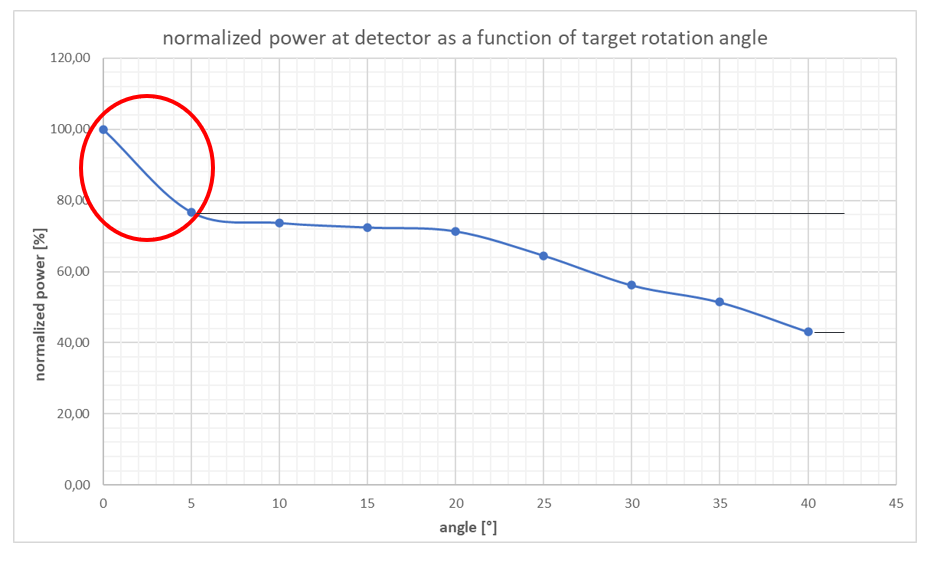Dear all,
I’m using the BSDF-Scatter-Model to simulate surface-scattering behavior of a flat target in NSQ-Mode.
I use the *.bsdf-file “LambertianBlack_IR.bdsf” since we use this material in our experiments.
The setup of the optical simulation is depicted below.

In our experiment the outgoing transmitter beam and the receiver are directed at the same angle towards the target
The angle of specular reflection in our experiments is basically 0°, because our AOI in the experiment is 0°,
- My Question: How does interpolation work for AOI<10° ?
- Motivation: When I rotate the target as depicted above, I get a sharp decrease in signal from 0° to 5 degrees, as can be seen in the graph below. I’m not sure this is physically correct...

Note:
The article below describes the usage of bsdf-file and comments on some aspects of interpolation between data points. But as far as I know, there’s now information on the interpolation for different AOIs.
Thank you very much,
Felix

